Identity theft affects millions of Americans annually. Hackers can acquire sensitive information on target individuals to cause financial and personal loss to the victim. Scammers are getting better at coming up with newer ways of stealing personal information. Internet users can gain protection by knowing the causes of identity theft and how to go about avoiding becoming a victim. There are common causes and methods used by scammers to successfully complete an identity theft attempt. People steal identities for various reasons, but some sections of the population are more vulnerable to identity theft. Users can avoid becoming a victim of identity theft by learning to identify scenarios where identity theft can happen.

The causes of identity theft are almost as many as the different types of identity theft. However, most identity theft causes differences can be grouped into three or four major categories. The table below shows the causes of identity theft and the related differences.
| Cause of Identity Theft | Differences |
|---|---|
| Lost Wallet | The criminal may or may not have to interact with the target individual for a successful identity theft attempt. |
| Theft of Mailboxes | Criminals need physical access to the target individual’s mailbox (and hence house address). |
| Using Public Wi-Fi | Identity thieves do not need to interact with any of the target individual’s belongings physically. The target individual needs to be connected to public Wi-Fi. |
| Invade Databases | Criminals can steal millions of identities in one go, though the difficulty is higher than some of the other methods. |
| Replaces Your Phone Number | Criminals need physical access to the individual’s device. In other cases, simple malware can be used. |
| Reveal Personal Information | Identity thieves can take advantage of the information already available. There is no requirement to interact with the target individual. The individual partially enables identity theft. |
| Skimming | Criminals normally need equipment to hijack ATMs. Criminals can also compromise card readers for the operation to work. |
| Scam Calls | Criminals can target many users easily and don’t need to be physically close by. |
| Looking Behind Your Back | Identity thieves need close physical presence to see the information that needs to be stolen. |
| Malware | The most high-tech method to target millions of users. Criminals don’t need users to make mistakes or interact with the user for success though the user does need to make the mistake of not installing security applications and practicing good internet hygiene. |
Table of Contents
1. Lost Wallet

Losing a wallet is one of the most common ways of becoming a victim of identity theft. This way of losing personal information is considered a low-tech cause of identity theft. A lost wallet is quite different when compared to more common causes of identity theft. That’s because the criminal has to physically gain possession of the wallet to get any personal information contained within the contents of the wallet.
A lost wallet works for many criminals as a source for identity theft, since wallets usually contain vital personal items and sometimes financial information. Common items that may give a person’s PII (Personally Identifiable Information) away to criminals include ID cards, credit cards, insurance cards, medicare cards, social security number cards and important phone numbers. With such a huge amount of personal information, scammers can then commit various types of fraud, including availing the victim’s health insurance, getting doctor appointments, opening new accounts, draining existing accounts and making purchases via the victim’s credit card.
Warning:
Scammers can also sell the victim’s personal information on the dark web, claim fraudulent tax refunds and in the case of an arrest in some unrelated violation, give the name of the victim as ID. That creates a fake criminal record in the name of the victim.
The signs of a lost wallet are obviously when the target individual no longer can find the wallet at any of the usual places. As far as signs of hackers leveraging information gleaned via the lost wallet, the list includes sudden denial of new loans, credit card purchases or medical claims. Suspicious medical treatments that the victim did not have, new purchases that the victim did not make, credit report errors, new unknown debts, missing email notifications, social security statement errors, tax return problems and an arrest warrant are some of the other signs.
The disadvantages of identity theft via lost wallet include loss of important identification items such as ID card, SSN card, insurance cards, increased stress, financial damage, anxiety and an uncertain financial future in case scammers drain the victim’s bank accounts.
2. Theft of Mailboxes

Mail Theft is another cause of identity theft where unattended mail gets picked up by a stalker. The stalker can then remove important information-rich mail from the bunch.
The difference between mail theft to other causes of identity theft is that the scammer doesn’t have to interact with the target individual in any environment, which makes mail theft a very lucrative and low-risk method of obtaining sensitive information. Mail theft is considered another low-tech offline method of identity theft.
Once a malicious person accesses the target individual’s mailbox, information such as bank statements, credit card bills, insurance company letters and medical records can easily become available. Malicious actors can then use such information to steal the individual’s identity. Criminals can also re-route the target individual’s mail simply by requesting a change of address at the related post office.
Note:
The most obvious sign of mail theft is missing mail. Other than that, all the usual identity theft signs also apply to mail theft such as sudden opening up of new accounts in the victim’s name, new loans, change of address at various services and institutions, unaccounted for purchases and medical treatments and crimes in the victim’s name.A victim of mail theft obviously has to deal with the disadvantage of missing important mail. Other disadvantages include having to deal with the consequences that scammers can achieve with the information in the stolen mail, the victim’s information being sold on the dark web and, sometimes, a potential meeting with law enforcement agencies.
3. Using Public Wi-Fi

Using Public Wi-Fi is a modern and high-tech cause of identity theft. Public Wi-Fi connections are not safe. The main difference between public Wi-Fi as a cause of identity theft and other causes is that scammers have a much wider net of potential targets and can essentially target any person in the world regardless of location.
When an individual connects to a public Wi-Fi network at a location like a coffee shop, an airport or a library, hackers may have already compromised the Wi-Fi network and set up monitoring mechanisms on the network. Even if the public Wi-Fi connection has password protection, hackers can still get in, since getting that password is as easy as impersonating a customer and asking for the Wi-Fi password from the shop owner or airport staff.
Note:
Hackers can eavesdrop on any data that the user sends over the internet to connect to services or send messages. Such data is bound to include a lot of sensitive and personal information. A skilled enough hacker may actually infect any device connected to the public Wi-Fi with malware that can steal even more data.After that, the criminal only has to repeat using the victim’s personal information to open accounts, drain current accounts, avail medical services, purchase expensive items, purchase medicine, sell the data and commit fraud on the victim’s name.

Signs of unsafe public Wi-Fi connections include locations like hotels, airports, coffee shops, bus stations, government buildings, waiting rooms and libraries and the fact that the Wi-Fi connection is public and free. Signs that a hacker has gained information on a user with public Wi-Fi connections include all the standard ones such as mailbox becoming cluttered, debt collectors getting in touch with the victim, the victim receiving new notification for two-factor authentication, the victims not being able to open new utility accounts and others.
The disadvantages of public Wi-Fi connections are many, such as unsafe connections, slow internet experience, possibility of getting hacked and censored content. If scammers can successfully do an identity theft attempt, the user will have to face consequences such as getting unexplained bills, getting rejected for new loans, credit score dropping, law enforcement agencies getting in touch and unauthorized charges on the victim’s accounts.
4. Invade Databases

Database attacks or data breaches can be another cause of identity theft affecting millions of users at the same time. Hackers can invade databases via advanced techniques (such as SQL Injection) to execute commands on back-end databases which are not allowed. Simply put, when users go to a website and input some text, depending on the technology used to make the website, the website might run an SQL query against a database. Hackers can hijack the process mentioned above and perform unauthorized functions. Such functions allow hackers to access all the sensitive data contained within the database. That is all hackers need to launch identity theft attacks afterward.
Similar techniques are used to successfully launch different data breach attacks and compromise sensitive information belonging to millions of people.
Signs of a database invasion include an unauthorized user trying to identify the underlying structure of an SQL query, trying to access tables containing database structure information and a large number of queries. Other signs of data breaches include critical file changes, slow devices, slow internet, locked user accounts, suspicious outbound traffic, compromised devices and unfamiliar activity via admin accounts. Once a successful identity theft via data breach takes place, all the signs are standard ones like personal information ending up on dark web forums, debt collectors contacting the victim, two-factor authentication alerts and unfamiliar expenses.
The main disadvantages of identity theft via data breach include loss of private information, potentially millions of users not receiving important emails and having to deal with potential fake tax returns.
5. Replaces Your Phone Number

Tampering with the target individual’s phone number can be another cause of identity theft. There are lots of ways to tamper with a phone number. Sometimes hackers simply take over a user’s phone number, like with an email account takeover. The technique used is called porting. Once personal information is stolen, hackers can then move to the second phase of impersonating the victim and contacting the cell phone service provider to change account information. Phishing attacks can get even more personal information, which can then be utilized to dupe service providers into canceling subscriptions and moving to another provider or device.
Stealing the SIM card in the target individual’s cell phone device physically is another way to gain control of the user’s personal data stored on the SIM.
Replacing the phone number is different from other causes of identity theft in the sense that scammers have to deceive phone providers in addition to the target individual for the identity theft attempt to be successful.
Signs that the cause of identity theft is a replaced phone number include a change of passwords and security question on the account attached to the phone, unaccounted long-distance calls, text messages and general internet data usage. The appearance of additional devices connected to the victim’s phone number is another sign.
Disadvantages of identity theft attempts carried out via replacing phone numbers include the victim having to replace the phone number and possibly change service provider and device, loss of private information and vulnerability to further damages by scammers via the stolen private information.
6. Reveal Private Information

Revealing information that can be classified as private or sensitive on various online and offline platforms is a classic cause of identity theft. The main difference between revealing private information and other methods of identity theft is that the target individual may reveal private information without any external influence. Scammers may or may not have to work on the target individual to access private information.
Some individuals are prone to oversharing on the internet, which simplifies the process for scammers. With enough sensitive information available on the target individual’s social media accounts, comments sections on various websites and personal websites, scammers can move on to the second phase of identity theft, which is to cause financial and personal damage.
Individuals can also be forced or tricked into revealing private information by simply lying about who the person on the other side of the conversation really is. Scammers may pose as children, students, models, wealthy individuals or poor citizens to convince the target individual to share sensitive information such as passwords, account numbers, addresses, real name and phone numbers.

Sometimes, scammers can also use techniques such as phishing to dupe target individuals into revealing private information. Essentially, scammers send target individuals (or millions of users) a fraudulent email message, pop up notification or text. The sent message, email or notification claims to be from a government agency or bank. Calling the number or visiting the website the message asks for results in the individual giving up personal information.
The signs of identity theft through the revealing of personal information include expensive items being purchased in the victim’s name, personal information being sold on the dark web, new accounts popping up at different institutions and services, fake tax returns and new loans.
Identity theft through any cause comes with a lot of disadvantages, but when the cause is as simple as revealing personal information, the damage done can be overwhelming. Scammers can sell the collected personal information to marketing agencies that flood the victim’s mailbox with junk mail. Other disadvantages include compromised bank accounts and credit cards, requests to confirm two-factor authentication when the victim hasn’t made the request, utility companies rejecting new accounts, unexpected tax refund, rejected tax return file, unexplained medical bills and a lowered credit score.
7. Skimming

Skimming is a relatively new cause for identity theft. Target individuals can become victims of skimming while swiping a credit or debit card at a shop (or any other service that accepts credit or debit card payments) to pay for goods and services. Skimming differs from other causes of identity theft in that the target individual has to have a credit or debit card that supports magnetic swipe via electronic card readers and the shop must have the electronic card reader in place.
Skimming works on a simple principle. Hackers know that a lot of individuals will end up paying for goods and services in different shops with credit or debit cards. Through a lot of pre-planning, hackers compromise the electronic card readers that the shopkeeper is going to use to charge customers. Once the shop employee swipes via the compromised electronic card reader, all the data available on the credit or debit card gets sent to the hacker. Hackers can essentially make a copy of the target individual’s credit or debit card. After that, scammers are free to make purchases using the copied card.
But as with most identity theft attempts, scammers have a multiple number of ways to perform the same task. Skimming can also happen without scammers having to compromise an electronic credit card reader. Hackers can set up devices on a given ATM and once the individual inserts the card to take out some cash, the device swipes the card and sends the information to the hacker.
Note:
Identity theft through skimming leaves plenty of signs such as banks contacting the victim to talk about recent suspicious transactions, credit card companies getting in touch with the victim, collections agencies asking about unknown debts (in the name of the victim) and credit reporting showing items that the victim has no clue about.The disadvantages of skimming include many small charges on the victim’s account, unfamiliar business deals on the victim’s statement, payments being made in locations the victim has never been to, lower credit balance and the requirement to go through all the procedures to handle compromised credit cards.
8. Scam Calls
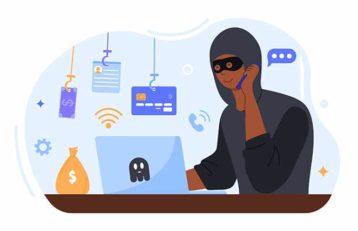
Scam calls are another cause of identity theft where scammers try to take people’s sensitive information over the phone. The main difference between scam calls and other causes of identity theft is that scammers have to work directly on the target individual instead of the individual’s account, device or card. Phone scams are as varied as any other cause of identity theft. But the principle behind all scam calls is the same. Scammers want to make the person at the other end of the phone give up personal and sensitive information.
Scam calls work by scammers picking a target individual and then making a call to either threaten or promise a dream to the person at the other end. Scammers can use a variety of stories to make the target individual pay either straight away on the phone or after the call ends. Of course, there is actually no prize or an emergency.
At other times, scammers can call the target individual while impersonating as an employee of a legitimate business or a government agency (scammers can also claim to be calling from a payment service or a bank). The end goal is to make the user disclose PII. Robot calls are just an automated version of scam calls where pre-recorded messages are used to urge the target individual to call a given number. Just like before, once the target individual calls the number, scammers will inform of a prize won or an occurence of an emergency situation. To solve the emergency situation or claim the prize, scammers will ask the target individual for some sensitive information (ID card number or credit card number).

Scam calls are easy to identify as scammers must use the same methods to coerce the target individual to make uninformed decisions. If a phone call asks the target individual to give some money to a relative or a friend within the next few hours or days then that is a sign of a scam call. Another sign is if the phone call talks about a virus on the individual’s device (scammers can then move to ask for login information to access the device and remove the virus), or uses threats (such as an arrest) if action is not taken quickly. Phone calls asking for credit card information (for shipping) or requesting personal information to verify an account are showing signs of being scams. If the person on the phone call does not want to give details about the business being represented, then that is a clear sign the phone call is a scam.
Disadvantages of scam calls are that the target individual ends up giving personal information, which can be used to either commit crimes or cause financial harm to the victim. Successful scam calls come with disadvantages, such as the stolen identity, wasted time and vulnerability to future attacks.
9. Looking Behind Your Back

Not looking behind one’s back while completing sensitive tasks in a public place can cause identity theft. Sometimes, this cause of identity theft is also labeled as shoulder surfing. Not looking behind while working on sensitive tasks provides scammers with an opportunity to get close enough to see the information being dealt with.
For example, if a target individual is not aware of a scammer nearby and enters the PIN number at an ATM, the scammer can record the keys pressed or the password entered. Knowing the PIN number would be even easier as there are fewer characters to guess. Similarly, if an individual is working on a laptop at a busy coffee shop or a public gathering spot, a scammer could just stand behind the individual and start recording the individual’s activities on the laptop. With enough time, the scammer will get a ton of sensitive information.
Note:
Scammers do not have to physically see the information being shown either. Sometimes, scammers can simply set up video cameras at various public spots (even in ATM booths) to record all activity.The difference between not looking behind one’s back and other causes of identity theft is that the scammer has to have the right person performing the right task in the right environment. Not looking behind one’s back is a low-tech cause of identity theft where a scammer doesn’t have to work on the user and can just exploit the environment to get sensitive information.

Signs of shoulder surfing can change depending on the environment and the two actors (the target individual and the person trying to steal personal information). In an office setting, if an employee is getting too close while an individual is discussing business on the phone, then that is a sign of shoulder surfing. Another sign is a co-worker paying too much attention to an individual’s computer screen.
Disadvantages of not looking behind one’s back include loss of sensitive information, such as PIN codes, passwords, email addresses and phone numbers and being forced to use cash while purchasing items of need. Identity theft caused by shoulder surfing has the same disadvantages as any other type of identity theft, mainly personal information being sold on the dark web, unaccounted for transactions, medical treatments and new loans.
10. Malware

One of the most high-tech causes of identity theft is malware. Malware as a cause of identity theft differs from conventional causes in the sense that scammers can target millions of people via the internet and can use a variety of methods. Scammers do not need to be physically close to the target or directly interact with the individual (as in phone call scams).
To understand how malware works as a cause of identity theft, first malware should be understood as a broad term covering all types of cyber threats used to gain personal information of target devices and individuals.
Scammers can use viruses, trojans, spyware and adware to infect an individual’s device and then steal personal information. Spamming millions of users with malicious links is another method of stealing sensitive information. Once enough personal information has been collected and verified, scammers can continue committing frauds in the name of the victims and even harm the victims financially by draining accounts and making expensive purchases.
Depending on the skill and resources available to scammers, an individual’s device can be infected either directly or via indirect methods, such as first tricking the individual to go to an appealing website. Other times, scammers use enticing download links (which actually download malware on the individual’s device) to monitor the user’s activity on a device. Such malware, also known as spyware, can even record the user’s keystrokes for a session.
All this information in the hands of scammers can lead to identity theft.

Depending on the complexity of the malware installed on the system, signs of malware could be different, easily identified or impossible to identify. Generally, signs of some spyware on a device include bad screenshot quality, malfunctioning autocorrect feature (especially with keyloggers), messages that the individual does not remember sending, problems when trying to reboot or shut down, lots of device activity even in standby mode, high data usage, device getting hot when not in use, battery draining even when no resource-heavy activities are taking place, the device being jailbroken (or rooted in the case of Android) and new applications showing up that the user does not remember installing.
Disadvantages of malware as a cause of identity theft include more data being stolen (since scammers can theoretically monitor everything that happens on a device), the target individual becoming a victim of data breach, credit score starts fluctuating, new lines of credit that the victim did not authorize, someone’s child being claimed as dependent for tax purposes, the victim’s tax being returned by someone else, unaccounted for bank charges, manipulated IRS records, new debts, new accounts and missed financial statements (documents sent somewhere else).
What Is the Simplest Method of Identity Theft?
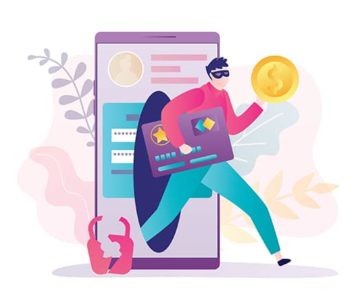
There are many types of identity theft (each with advantages and disadvantages for the scammers behind the operation) but the simplest method of identity theft is for the scammer to steal data that is not secured properly on a computer.
Today, most internet users keep sensitive and confidential data on both mobile and desktop devices. Even more data (such as documents, images and videos) are stored on cloud services. If such data is not protected properly (via encryption and the installation of antivirus products) and the user is not careful about clicking links and downloading files, hackers can easily steal that data.
This is important:
Users not generating strong passwords to accounts makes things even easier. As mentioned before, all that the scammer needs the target individual to do is to click a malicious link, go to the linked website and input sensitive information. Scammers can achieve the same result when users are not cautious downloading files from third-party sources on the internet.With enough data in place, scammers first verify the data and then use the data to create fake profiles, apply for loans, drain bank accounts, commit even more frauds and register to the police (when caught) as the victim whose data was stolen.
Malware-based identity theft opportunities are the easiest for scammers since there is no need to physically get involved with the target individual or try to compromise a network belonging to an organization (where the chances of proper security are high).
Why Do People Steal Identities?
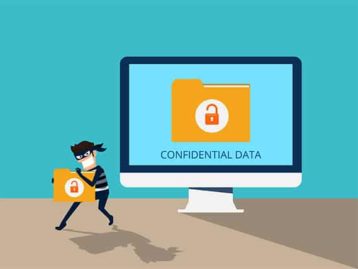
People steal identities for financial gain. As mentioned before, once an identity theft attempt is successful, criminals usually end up with enough information to make purchases online in the name of the victim. There are lots of other opportunities to make money such as opening up new lines of credit in the name of the victim, file tax returns to get tax refunds, use credit cards and apply for new loans.
Revenge is another common reason why people steal identities. Becoming a victim of identity theft and getting one’s credit card compromised and personal information stolen is a very stressful experience. An ex-business partner, relative, ex-spouse or a neighbor might seek revenge by giving rise to inconvenient situations in the target individual’s life. Some may want the target individual to suffer all the other consequences of identity theft. Similarly, co-workers can also try to thwart the career of each other using ill means.
Who Is the Most Vulnerable to Identity Theft?

The most vulnerable to identity theft are the elderly. Elderly people have a reduced capacity to properly judge the intentions of other people and may not be able to understand and respond to a dangerous situation. Less skepticism means criminals have an easier time financially exploiting the elderly. Another reason why the elderly are the most vulnerable to identity theft is because of high net worth. Elderly people have better net worth than almost any other age group. Combine the high net worth with difficulty to understand modern forms of identity-theft attacks, such as phishing and medical theft, the elderly portion of the population is susceptible to identity theft.
Of course, high income and high networth individuals of any age are vulnerable to identity theft. More income means that the person is likely to do more shopping and engage in more business deals. Having a high income also increases the chances of an individual applying for multiple credit cards. All of such attributes increase the data the individual generates and the opportunities for hackers to strike. People with high incomes may become more vulnerable to cyberattacks when compared to people with low incomes. Scammers are also drawn more to high-income earners because of better returns.
However, elderly people may not use online banking (what hinders cyberattacks that try to steal sensitive data on devices) or social media accounts (to broadcast personal details to the world). Depending on the circumstances, heavy social media users may actually be more vulnerable to identity theft than the elderly.
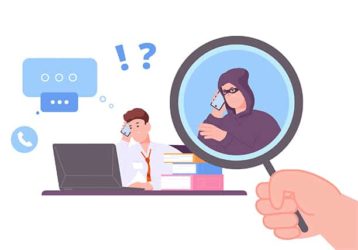
Sharing personal and financial details on any online platform is never a good idea. If a scammer gets hold of an individual’s bank account number via a data breach or by searching through the trash can, having PII on social media may make the task of identity theft easier. With enough personal information, the scammer can bypass security measures implemented by banks to protect user accounts.
Heavy social media users are also more likely to give out critical personal information which further attracts criminals. From another angle, children can also be considered as the most vulnerable to identity theft. Children have a clean slate with applying for mortgages, loans and credit cards. Stealing social security numbers belonging to children can be a big advantage for criminals as crimes are easier to be successful. The other reason why children may be more preferable for criminals engaging in identity theft is that a child would only know about the identity theft years later when the time comes to apply for credit cards, car loans or student loans (from which the child would get rejected because of identity theft). By then criminals would have committed many frauds and gotten away.
What Are the Dangers Associated With Identity Theft?
Scammers that take advantage of both low and high-tech methods to steal personal information pose the greatest danger. And there are many dangers of identity theft that most people don’t pay attention to.

For example, a lot of people would not mind a homeless-looking guy sifting through the recycling bin. But that person could be looking for PII documents such as bills, bank statements, credit card statements and other important documents. If the criminal is able to get a hold of the target individual’s personal data, address, birth date and SSN, dangers such as new unaccounted for accounts and loans in the victim’s name become possible. Criminals can also change the address to which bank statements are sent, which presents another danger where the victim doesn’t even know that an identity has been stolen.
Another danger of identity theft is the criminal engaging in other crimes while posing as the victim. Law enforcement agencies such as the FBI or local police could come knocking on the door of the victim without the victim knowing anything about the criminal activities.
Most of the dangers associated with identity theft depend on what type of information criminals have been able to steal. The dangers of identity theft grow exponentially if the stolen private information includes an individual’s SSN. A stolen SSN (an old one) can give away information such as the victim’s location. The SSN is used not just in business documents but also government records. If someone wants to apply for a mortgage or file tax returns with the IRS, an SSN will be needed. The problems grow even further if criminals sell the SSN with other information on the dark web.
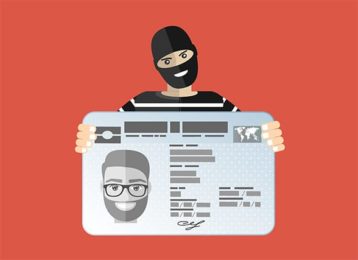
When scammers commit identity theft by hacking social media accounts, the dangers include hackers posting embarrassing content on the victim’s profile, accessing private photos, documents and messages and any other account which is configured to sign in with other accounts such as Google, Twitter or Facebook.
Identity theft dangers change a bit if a criminal is able to compromise an email account. Criminals can glean all the financial information from the victim’s email account. Another problem happens if the victim uses the same password for both email and the bank’s official website. Identity thieves can also reset passwords and then own the email account (along with any other account using the same password) outright. Criminals can also send spam to the victim’s contacts and other random people to commit fraud in the name of the victim.
If thieves (that can include the server at a restaurant or the cashier at the grocery store) misuse the individual’s credit card while charging for products bought, that can lead to other dangers. Additional transactions the victim does not remember making, credit card information (such as Card Verification Value) ending up on the dark web and other card frauds become real possibilities.
How Can I Avoid Having My Identity Stolen?
Fortunately, there are many ways to avoid having identity stolen. The most effective ways to avoid having identity stolen are given below.

- Monitor Credit Reports Regularly: Regularly means that the individual should check credit reports twice a year for possible inaccuracies, mistakes, unknown activity and neglect. The three credit bureaus that can provide a comprehensive credit history document include Transunion, Experian and Equifax.
- Don’t Post Private Information on Any Platform: Private information includes lots of stuff but the most critical information items are date of birth, place of birth, full names and address. The best places for criminals to steal identities are social media websites such as Facebook, Twitter, WhatsApp, YouTube and Reddit. Criminals can not only directly steal information from an account but also use search engines to find more information about the target individual.
- Dispose of Sensitive Documents Properly: That means use a shredder to get rid of junk mail, extra copies of documents, redundant documents, expired documents and credit card receipts. Basically, any piece of paper that has financial or private information. Care should also be taken when leaving such documents out in the open.
- Stay Away From Pirated and Shady Software: That means to stop visiting third-party unverified websites to download software applications. Peer to peer file sharing websites are also out. Hackers routinely try to label malicious files as games, software, secrets, speed boosters and screensavers to get users to download. Once on a device, all of the user’s files are exposed.
- Keep All software and Operating System Files Updated: Almost all software applications have problems. Software developers are consistently pushing out security updates that fix existing and new vulnerabilities. If the user does not update software and OS files regularly, hackers can exploit security vulnerabilities.
- Always Have Anti-malware and Antivirus Programs on Devices: Without security software installed and updated, hackers can install spyware on the user’s device without consent and continue to collect information until the user detects the spyware or enough information is collected.
- Use Strong Passwords: If scammers can’t guess or brute force a password then there is less chance of an account being compromised. Following that, users should also regularly change passwords and not use the same password twice no matter how strong the password is.
- Avoid Doing Business on Sketchy Online Platforms: All online purchases should be made on reputable platforms. If a company doesn’t have a good reputation (or any reputation at all) then there is a risk of identity theft. For any website check out the reviews on various forums, BBB ratings and security practices such as HTTPS connection and verification from reputable financial institutions.
Identity theft is prevented by not sharing any personal or financial information on the internet or with strangers and paying attention to credit reports and other documents for inconsistencies. Apart from that, learn how to prevent identity theft with the tips above.
Is It Possible for Someone To Steal Your Identity in Public?

Yes, someone stealing another person’s identity in public is definitely possible. Depending on the resources, time and potential returns, criminals can steal someone’s identity in public. The main way criminals do that is via shoulder surfing. As mentioned before, shoulder surfing just means that a criminal is looking at the target individual from a close-by location. So if the target individual is calling someone and saying out loud a credit card number or SSN then the criminal can note that down and commit identity fraud later.
Similarly, in other public places such as airports, coffee shops and libraries, an identity thief can simply look at the screen of the target individual to glean any noteworthy information.

